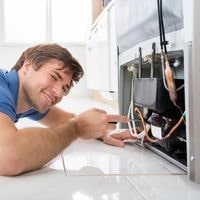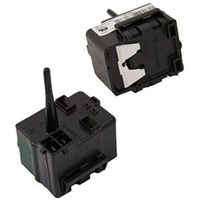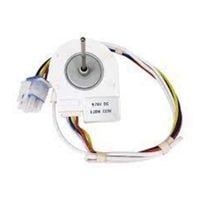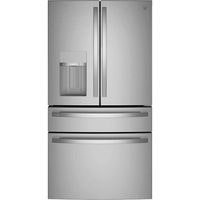GE refrigerator not cooling. When your GE refrigerator doesn’t cool, it can be very frustrating. You may end up buying more groceries than you need because of spoilage in the refrigerator.
Additionally, if your warranty is expired and the repair is expensive, it may not make sense financially to fix the problem with a big bill.
That’s why we’ve compiled a list of the most common problems with our easy troubleshooting tips. Make sure you read the whole article to learn the real reason.
GE refrigerator not cooling
Ensure your coils are clean and unobstructed. Clogged coils can often result in poor performance or even unnatural temperatures within your refrigeration equipment resulting in serious consequences to both your product and customers’ experience with them.
It’s important to ensure that there isn’t anything stuck in the blades of the condenser fans themselves.
You should also ensure the fan pivots easily when manually turned in attempts to remove any debris that may have been trapped between the fan and its housing attachment points or motor ball bearings, for example.
Temperature settings are incorrect
It is likely something is off if your GE refrigerator’s temperature settings are reporting a cool temp, but the fridge feels warmer.
The first thing to do is check your owner’s manual, which can tell you the ideal cooling temperature for your refrigerator model, and reset the temperature appropriately.
Continue to lower the temperature until the refrigerator reaches 40°F or more if the temperature decreases only marginally.
If your GE fridge still doesn’t feel as cold as it should or if its contents seem warm, but the temps report a normal reading, there may be an issue with the freshness settings and your exhaust motor, which will need to be looked at by a professional technician.
Faulty Start Relay
The start relay works with the start winding to begin running the compressor. If the relay is not working properly, then it may cause your refrigerator to become either too hot or not cold enough.
To determine if the problem stems from the start relay, test it for continuity between its Run-Start terminal sockets with a multimeter.
If there is no continuity, replace it. It’s also important to know that if the start relay has a burnt odor, you should throw it away and replace it with a new one.
Overstuffed refrigerator
We may all be guilty of it sometimes, but there are times when overstuffing is indeed the culprit when your GE refrigerator won’t get cold.
Because of this, more often than not, there are certain things that can prevent your refrigerator from chilling properly and provide adequate levels of refrigeration to maintain the recommended temperature between 35 and 37 degrees F.
You see, in order to maximize its capability in cooling in your home, the air vents must remain clear in between tightly packed food items in your refrigerator compartment.
If you find in our case that you’ve put too many items into the fridge but then notice that several cubes of cheese or other food items.
You placed into your fridge aren’t fully chilled could be an indication that it might be time for you to take out a few bottles, cans, and other items until such a time when you’re able to thoroughly clean up after a while before putting everything back inside.
Evaporator fan motor issue
The evaporator fan motor is a crucial component of a refrigerator. A refrigerator uses the evaporator’s cooling coils to circulate air over the food and drinks as they’re stored, which allows for optimal cooling as air passes through.
If the fridge has only one motor that is used to power both the freezer and refrigerator area, then that motor can be found in the back.
You can determine whether you need to replace the motor if it seems unable to turn freely but also test for continuity and noise, and anything else that might indicate a problem with your system.
Failed internal part
If you still have a GE Refrigerator that’s not keeping food cold, you might want to get in touch with a repair company to help resolve the issue.
There are several different components that keep your refrigerator working properly, including refrigerant coils that help control the temperature inside of the appliance.
If any component fails or malfunctions, it can lead to temperature-related problems, which you need to fix before they become too much for the appliance to handle.
Check for power
GE refrigerators are used to preserve food and drinks at a temperature. Many reasons may be the reason why your refrigerator is not working.
Some of them include power outages, incorrect installation, and leaving the door open too long. Check for problems resulting from power or electricity as the first step in troubleshooting.
If there is no power, this may mean a power outage or a blown a fuse or breaker in your home. The next step would be to check if it was incorrectly installed.
Here, you need to check for loose wires and thoroughly examine all connections between appliances, electrical outlets, and house wiring. You should contact GE’s customer service department for assistance if the installation was not done correctly.
Condenser coils should be cleaned
The coil in your fridge is key to keeping it cool, but the one located toward the back of your fridge does much more than this.
The unit helps remain energy efficient by removing heat generated by refrigerant compressors. Air only passes through only when the coils cool it.
Left uncleaned, dust will accumulate over time and reduce your refrigerator’s cooling capacity. Using a vacuum or an attachment designed for cleaning air vents can help keep dust at bay.
Defective Compressor
The compressor is a pump that compresses the refrigerant and circulates it through the condenser and the evaporator.
It keeps the refrigerator cool if it’s not working. This rarely happens. Replace the compressor after checking all the more commonly defective parts.
Check the compressor with a multimeter for continuity between its electrical pins on one side. If an open circuit is detected, it means the compressor needs to be replaced by a technician.
Final Words
